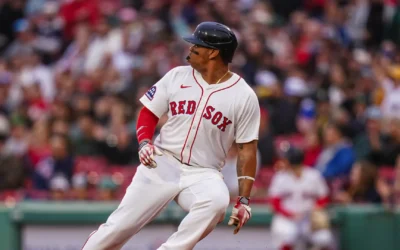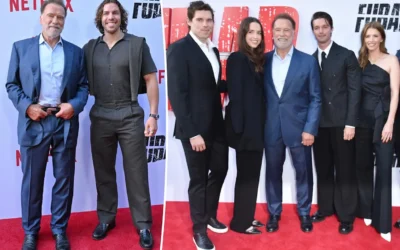Bryan Cranston’s Disgusting ‘SNL’ Sketch Idea: A Behind-the-Scenes Look
Saturday Night Live (SNL) has been a staple of American television since its debut in 1975, providing a platform for comedic sketches that often push the boundaries of taste and humor. Over the years, many iconic moments have emerged from the show, but it is rare to hear about the wilder ideas that never see the light of day. Recently, Bryan Cranston, noted for his acclaimed roles in Breaking Bad and Malcolm in the Middle, opened up about one such idea he brought to the table during his time as an SNL host.
A Comedic Vision Quashed
During an interview, Cranston recounted the story of a particularly “disgusting” sketch he thought would be a hilarious addition to the show. While he did not provide an extensive detail of the sketch, he did share that it involved concepts that were likely too outrageous even for SNL’s celebrated absurdity.
“I had this bizarre idea that I thought was really funny at the time,” Cranston explained. “But when I pitched it, the laughs quickly faded into a series of awkward looks and uncomfortable silence. It was obviously something that was best left unsaid.” His reluctance to share the finer points of the concept certainly adds to the intrigue, leaving fans to speculate the limits of humor he wasn’t willing to cross.
The World of Sketch Comedy
Sketch comedy, particularly in a live setting like SNL, often teeters on a fine line between daring brilliance and ludicrous absurdity. Those who participate in this world know this all too well, as they often witness ideas that are bold and imaginative being discarded. Cranston’s admission underscores the unpredictability inherent in the sketch-writing process.
One common critique of sketch comedy is that it often relies on shock value or offensive jokes to elicit laughs. With a legacy that includes everything from political satire to surreal slapstick, SNL has often faced backlash for crossing those lines. Cranston’s experience is a testament to the careful balance that showrunners must strike, considering not only audience reactions but also the actors’ and guest hosts’ comfort levels.
Emmy Awards and SNL’s Growing Influence
In addition to Cranston’s comedic revelations, SNL is currently making headlines for another reason: the submission of a record 42 performers for Emmy consideration. This impressive number reflects the show’s enduring popularity and the talent pool that has amassed over its decades-long history.
The fact that the show keeps redefining itself, addressing timely issues, and highlighting a diverse array of talent speaks volumes about its quality and relevance in the entertainment industry. This submission showcases not only the comedic ensemble that takes the stage every weekend but also the behind-the-scenes support, writers, and production teams that bring these sketches to life.
The Evolution of SNL
Saturday Night Live has experienced a substantial evolution since its inception. Initially, the show garnered attention for its edgy humor and willingness to tackle cultural, political, and social issues. However, as audiences changed and diversified, SNL re-evaluated its entertainment strategies. It embraced inclusivity and multi-faceted humor through new voices and perspectives.
The record number of Emmy submissions could symbolize a broader recognition of this evolution. In recent years, SNL has made significant strides in ensuring a greater representation of performers from varied backgrounds. This effort has helped the show not only remain relevant but also reshape the narrative surrounding comedy and television expectations.
Memorable Moments and Controversies
It’s worth noting that SNL has had its share of memorable moments and controversies over the years. Some sketches have become iconic, while others have sparked intense debates regarding their appropriateness. This ongoing balancing act between pushing the envelope and engaging in responsible humor is one that SNL navigates regularly.
As recent years have brought heightened awareness around societal issues, the show has made attempts to adapt its content accordingly. When discussed in tandem with Bryan Cranston’s sketch idea, the implications of how humor can be interpreted differ greatly and often leave the performers in challenging positions. They may have to decide whether to cater to what could be purely shock value or uphold comedic integrity that resonates with wider audiences.
Cranston’s Legacy and Departure from Comfort
Brian Cranston’s diverse career attests to his versatility as an actor. From portraying Walter White’s moral decay in Breaking Bad to embodying heartfelt narratives in films like The Upside, Cranston has shown both his range and willingness to take creative risks. His foray into the realm of sketch comedy aligns with his pursuit of exploring new artistic avenues, even if it means facing the occasional rejection.
The willingness to push himself and challenge the norms that govern mainstream television is inspiring. For many actors, particularly those like Cranston who have established themselves within traditional narratives, venturing into something as unpredictable as SNL is both a boon and a risk.
SNL: A Pathway for Future Stars
As SNL continues its legacy, it serves as a stepping stone for many comedians launching their careers. Stars like Tina Fey, Amy Poehler, and more recently, Pete Davidson and Kate McKinnon gained notoriety while performing on the show. With Cranston’s admissions regarding the behind-the-scenes workings of sketch ideas, future comedians can learn about the inherent challenges and rewards that come with engaging in this craft.
This legacy of comedy continues to grow and develop alongside new talent; the future of SNL remains bright, even amidst the controversies and the unsettling sketches that may never see the light of day. Just as Cranston reflected on his experience, the evolving format of the show also invites continuous critique, laughter, and profound reflection, resonating with audiences long after the credits roll.
Conclusion: The Brave New World of Comedy
In the end, what we glean from Bryan Cranston’s experience is not just the understanding of a rejected sketch but a glimpse into the often convoluted world of comedy. SNL has a footprint in the landscape of American culture, but as it continues to adapt to social and political currents, its cast and crews are crucial in shaping what comedy looks like moving forward. While some sketches might be too outrageous, the discussion they generate can lead to growth, greater understanding, and, perhaps ironically, laughter.
As audiences remain eager to see what unique bits of humor might come next — both approved and otherwise — we can only hope that creativity among performers will flourish. Bryan Cranston’s moment is just one of many, and it showcases the multi-layered complexities of entertaining in a modern world.







